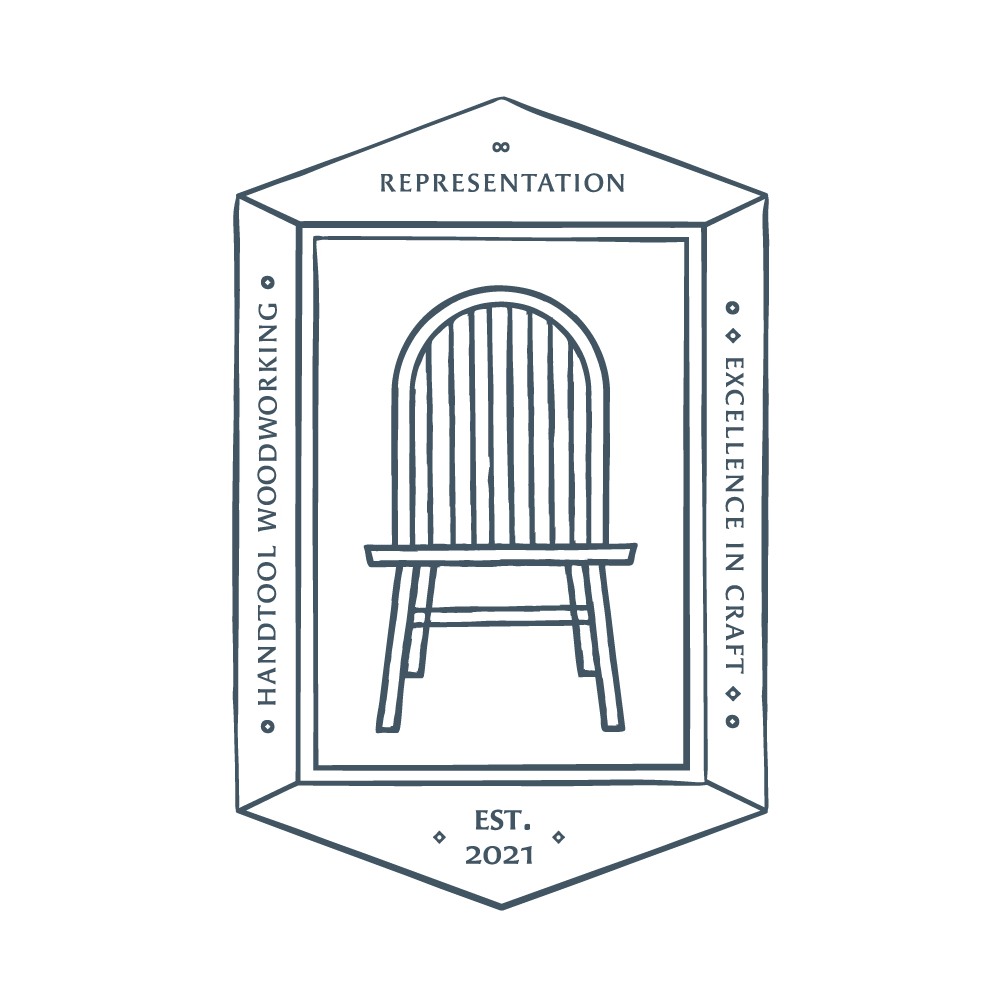6 Full Scholarships (covers Tuition, Materials, and some Meals)
Applications have closed.
Notification of Award: Late July
Teacher: Rob Spiece & Katie Bister
This week-long class will give students a glimpse into the rocking chair production process developed for this chair over at Student Craft. Because this Rocker is designed for production, there several jigs that we have developed to help streamline the process. The chair is made up of 20 separate parts, so its not an easy chair to make. The foundation of any Windsor chair is the wooden seat. For our production we CNC the shape of our rocker seats, but this can also be done by hand using a combination of any of the following; adze, scorp, angle grinder, carving gouge, and travisher. The mortises drilled into the bottom and top of the seat determine the rake and splay of both the legs and backrest which influences the look, comfort, and stability of the chair. We have a pair of jigs designed for this process, one for the leg mortises in the seat and the other for the spindle mortises. These jigs help us ensure that our rockers are as similar to each other as possible. Of course this can be done without fancy jigs using bevel gauges and mirrors to sight the angles, or laser levels, but the likelihood that they come out perfectly uniform is low.
The second area of focus is the undercarriage, the legs and stretchers (we add the rocker blades once the chair has been completely assembled). For the legs we will start with tapering them using a jig for the table saw after which we chamfer all the corners to make them octagons. The tenons are added using a sled and tenon cutter on the lathe. Once we fit the legs into the mortises of the seat we can begin drilling for the stretchers, we have another jig for this process to keep all the mortises at the same height when drilling. The mortises for the side tenons are drilled first and then we measure for the side stretcher length. Side stretchers them need to be turned and fit so that the mortises for the cross stretchers can be drilled. Then we measure and turn the cross stretchers with the same process as the side stretchers. Once all of the pieces have been finish sanded for the undercarriage it can be glued together.
Next we move our focus to the back assembly, the crest rail and the 8 long spindles that join it to the seat. The crest rail is a bent lamination of eight pieces that have been milled to 1/8 inch thickness. We use a curved form and our vacuum press to glue and bend these crests. Once the glue has dried we will use an adjustable angled platform to drill the mortises for the spindles. Then we can shape the crest rail. The spindles are rough turned before class and each student will get a set of spindles to finish shaping by hand.
Who should apply: Applicants of all skill levels are welcome and must identify as historically excluded or under-represented in the field of woodworking.
Type of Class: CMT Scholarship Seats are fully-funded seats offered in classes that are organized by an established instructor or institution external to CMT. To learn more read the CMT Class FAQ page.
